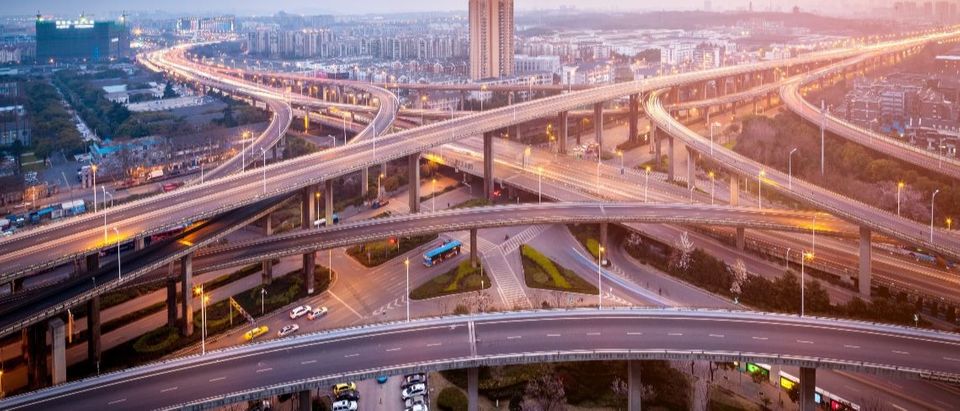Editor’s note: We endeavor to bring you the top voices on current events representing a range of perspectives. Below is a column arguing that an infrastructure bill as part of the next coronavirus stimulus package would help mitigate the economic downturn caused by coronavirus and help repair America’s broken infrastructure system. You can find a counterpoint here, where Baruch Feigenbaum of the Reason Foundation argues that an infrastructure spending bill would not have the intended economic effects and would be better handled by the free market.
Of course America needs more infrastructure; it’s been obvious for years. And today, in the wake of the Covid-19 crisis, the need is even more obvious.
The American Society of Civil Engineers publishes a “report card” on America’s infrastructure; the latest grade is D+.
Moreover, new kinds of infrastructure are needed. For instance, there’s 5G spectrum, which requires new cell towers. The phone companies will happily build this infrastructure in cities, where density guarantees profitability, and yet what about the rest of the nation? What about small towns and rural areas? Nobody is going to wire them for 5G — and 6G, and 7G, and whatever comes after that — without new money from somewhere.
In fact, the government has, in the past, created various programs to finance nationwide infrastructure expansions. The most successful of these was the Rural Electrification Administration, established in 1935; REA helped bring electricity, and then phone service, to much of the nation. At the time, critics called REA a boondoggle, and yet wiser heads knew that a nation is not a nation unless it takes steps to bring every citizen up to a certain minimum and, further, links them all together.
Unfortunately, in recent decades, various factors — including competing spending priorities, the rise of Greens and NIMBYs, and a surge in libertarian ideology — have cut against the one-nation sentiment that undergirded robust infrastructure spending. Indeed, over the last 60 years, infrastructure spending as a percentage of GDP has drifted downward, from 3 percent in 1960 to 2.3 percent in 2016.
We might ask: Is America better off in the wake of this infrastructure dearth? Are we more united as a nation?
Today, of course, Covid-19 has changed many calculations. Most obviously, beyond the loss of life, we seem destined to enter a deep recession, perhaps even a devastating depression.
If so, then counter-cyclical spending programs, such as for infrastructure, start to look pretty good. We need that infrastructure, of course, and yet at the same time, we need the economic activity. That is, if consumers aren’t consuming, and investors aren’t investing, we’re stuck in a trough. So government spending can help, by getting money back into circulation.
That’s why, on March 31, President Trump called for $2 trillion in new infrastructure spending. As he said, the program should “be focused solely on jobs and rebuilding the once-great infrastructure of our Country!” To be sure, Trump has made this call before, and nothing has happened. Hopefully now, finally, the crisis will get things moving.
To spend this money, there’s no reason to raise taxes, because there’s never been a better time to borrow. The Fed Funds Rate — the key interest rate charged by the Federal Reserve — is a mere .25 percent. It’s hard to get much cheaper than that, unless interest rates go negative, as they have in Europe and Japan — and many think negative rates will, in fact, come here.
Yet whether interest rates are negative or merely extraordinarily low, it’s obvious that the nation is awash in idle capital — so let’s put it to work.
Yes, debt and the deficit must be considered, and yet national morale — even national survival — must be considered first. Furthermore, if we can’t get ourselves out of the economic slump, then American bolsheviks will take over, and the debt will be the least of our problems.
Indeed, in this Covidean Era, we should be thinking about what newer forms of infrastructure might be necessary. For instance, we’re going to need a lot more internet capacity than we once thought. Even as we recover from the virus, most Americans are going to be increasingly dependent on the net, as well as on related options for teleworking and virtualization. These tech trends will account for much of the 21st century economy.
Moreover, even in the physical world, changes will have to be made. Most obviously, the tendency will be for the population to disperse, and so we’re back to roads and bridges, especially since mass transit doesn’t seem so attractive anymore.
Indeed, it’s likely that all manner of social distancing lessons will have to be incorporated into our built environment, from parks to plazas, from airports to stadiums.
So we can see: If America needed better infrastructure before, it really needs it now.
James P. Pinkerton served as a domestic policy aide in the White Houses of Presidents Ronald Reagan and George H. W. Bush. He also worked in the 1980, 1984, 1988, 1992, and 2008 presidential campaigns. From 1996 to 2016, he was a contributor to Fox News Channel.


